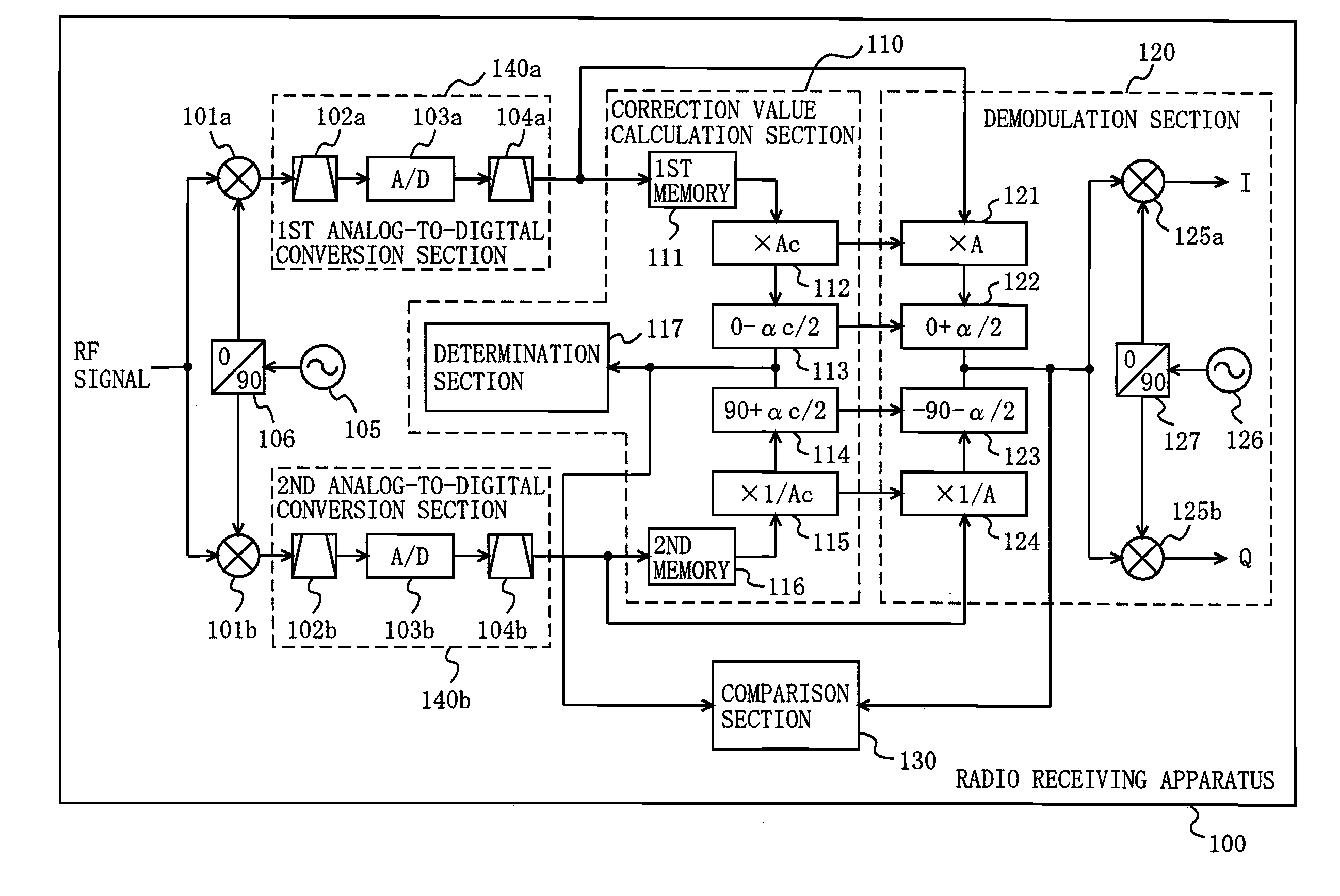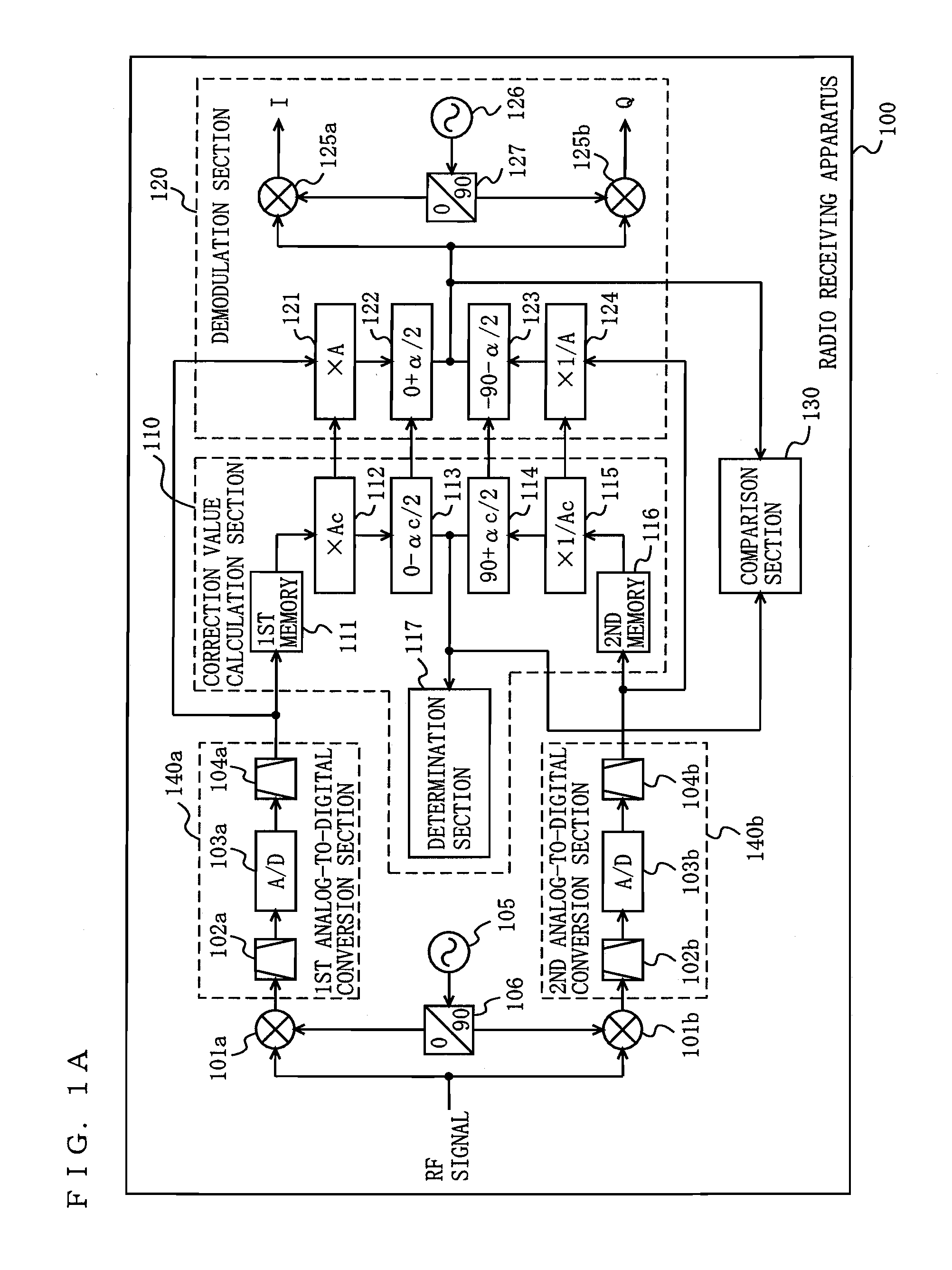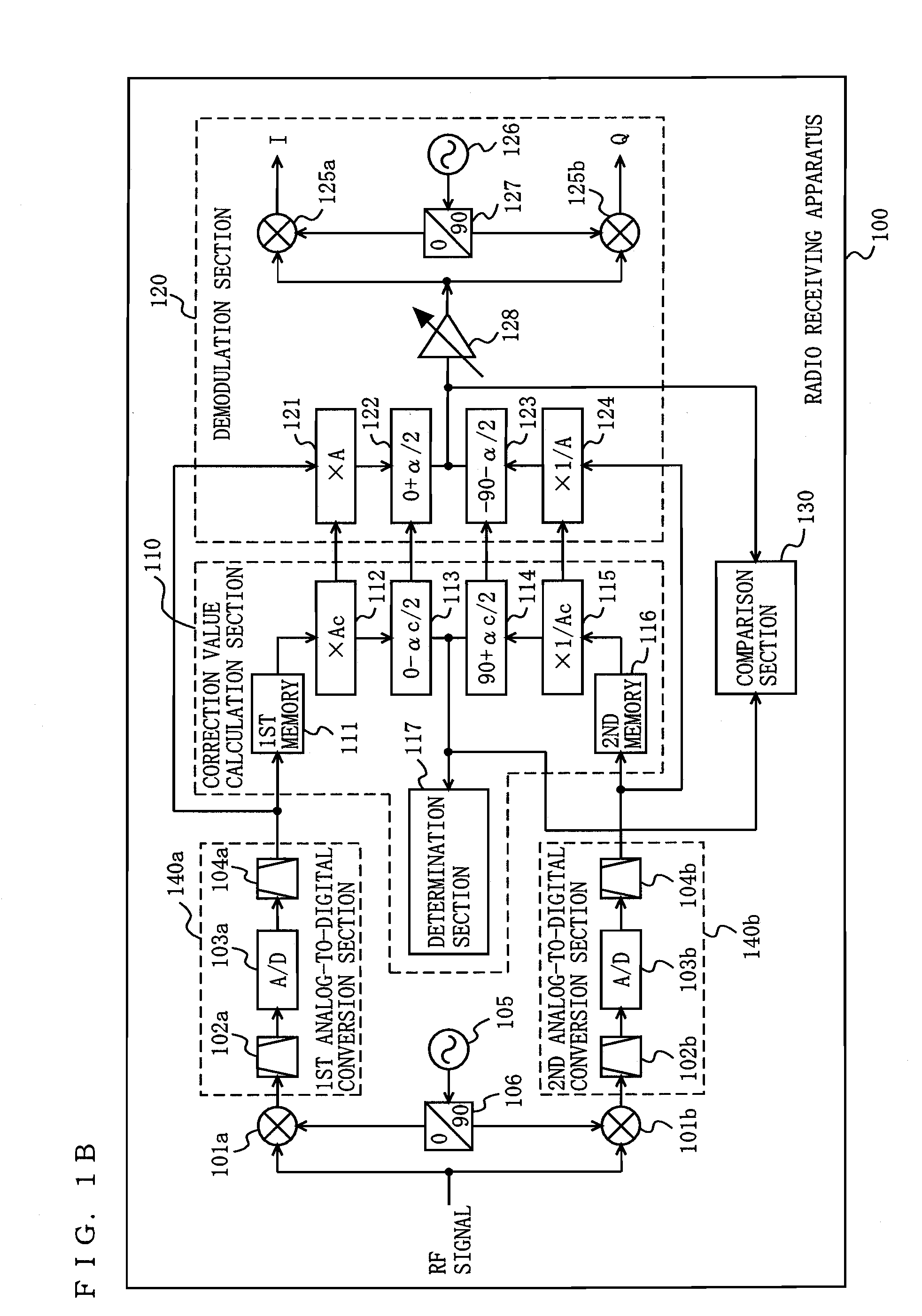Radio receiving device
a technology for receiving devices and radios, applied in the direction of digital transmission, amplitude demodulation, pulse technique, etc., can solve the problems of image frequency signals that interfere with the demodulation of desired signals, image frequency signals that interfere with the above-described rf filters, and increase the size of above-described filters, etc., to achieve the effect of suppressing image interference in a short period of tim
- Summary
- Abstract
- Description
- Claims
- Application Information
AI Technical Summary
Benefits of technology
Problems solved by technology
Method used
Image
Examples
first embodiment
[0132]FIG. 1A is a block diagram showing a functional structure of a radio receiving apparatus 100 according to a first embodiment of the present invention. In FIG. 1A, the radio receiving apparatus 100 includes a first down-converter 101a, a first analog-to-digital conversion section 140a, a second down-converter 101b, a second analog-to-digital conversion section 140b, a local oscillator 105, a first 90-degree phase shifter 106, a correction value calculation section 110, a demodulation section 120, and a comparison section 130.
[0133]The first analog-to-digital conversion section 140a includes a first antialiasing filter 102a, a first analog-to-digital converter 103a, and a first channel selection filter 104a.
[0134]The second analog-to-digital conversion section 140b includes a second antialiasing filter 102b, a second analog-to-digital converter 103b, and a second channel selection filter 104b.
[0135]The correction value calculation section 110 includes a first memory 111, a fir...
second embodiment
[0164]FIG. 1A is used for showing a radio receiving apparatus, according to a second embodiment, which is similar in structure to that according to the first embodiment. The second embodiment is different from the first embodiment in calculation algorithm used in the correction value calculation section 110. FIG. 3 is a diagram for illustrating a calculation algorithm used in the correction value calculation section 110 of the radio receiving apparatus 100 according to the second embodiment of the present invention.
[0165]In the first embodiment, the correction value calculation section 110 selects the amplitude correction candidate value Ac and the phase correction candidate value αc from the predetermined ranges and obtains the first combined signal by two-dimensional matrix calculations, so as to obtain the inflection point. However, it requires a large amount of memory to perform two-dimensional matrix calculations.
[0166]In the second embodiment, the determination section 117 of ...
third embodiment
[0172]FIG. 1A is used for showing a radio receiving apparatus, according to a third embodiment, which is similar in structure to that according to the first embodiment. The second embodiment is different from the first embodiment in calculation algorithm used in the correction value calculation section 110. FIG. 5 is a diagram for illustrating a calculation algorithm used in the correction value calculation section 110 of the radio receiving apparatus 100 according to the third embodiment of the present invention.
[0173]In the first embodiment, the correction value calculation section 110 selects the amplitude correction candidate value Ac and the phase correction candidate value αc from the predetermined ranges and obtains the first combined signal by two-dimensional matrix calculations, so as to obtain the inflection point. However, it requires a large amount of memory to perform two-dimensional matrix calculations.
[0174]In the second embodiment, the determination section 117 of th...
PUM
 Login to View More
Login to View More Abstract
Description
Claims
Application Information
 Login to View More
Login to View More - R&D
- Intellectual Property
- Life Sciences
- Materials
- Tech Scout
- Unparalleled Data Quality
- Higher Quality Content
- 60% Fewer Hallucinations
Browse by: Latest US Patents, China's latest patents, Technical Efficacy Thesaurus, Application Domain, Technology Topic, Popular Technical Reports.
© 2025 PatSnap. All rights reserved.Legal|Privacy policy|Modern Slavery Act Transparency Statement|Sitemap|About US| Contact US: help@patsnap.com



